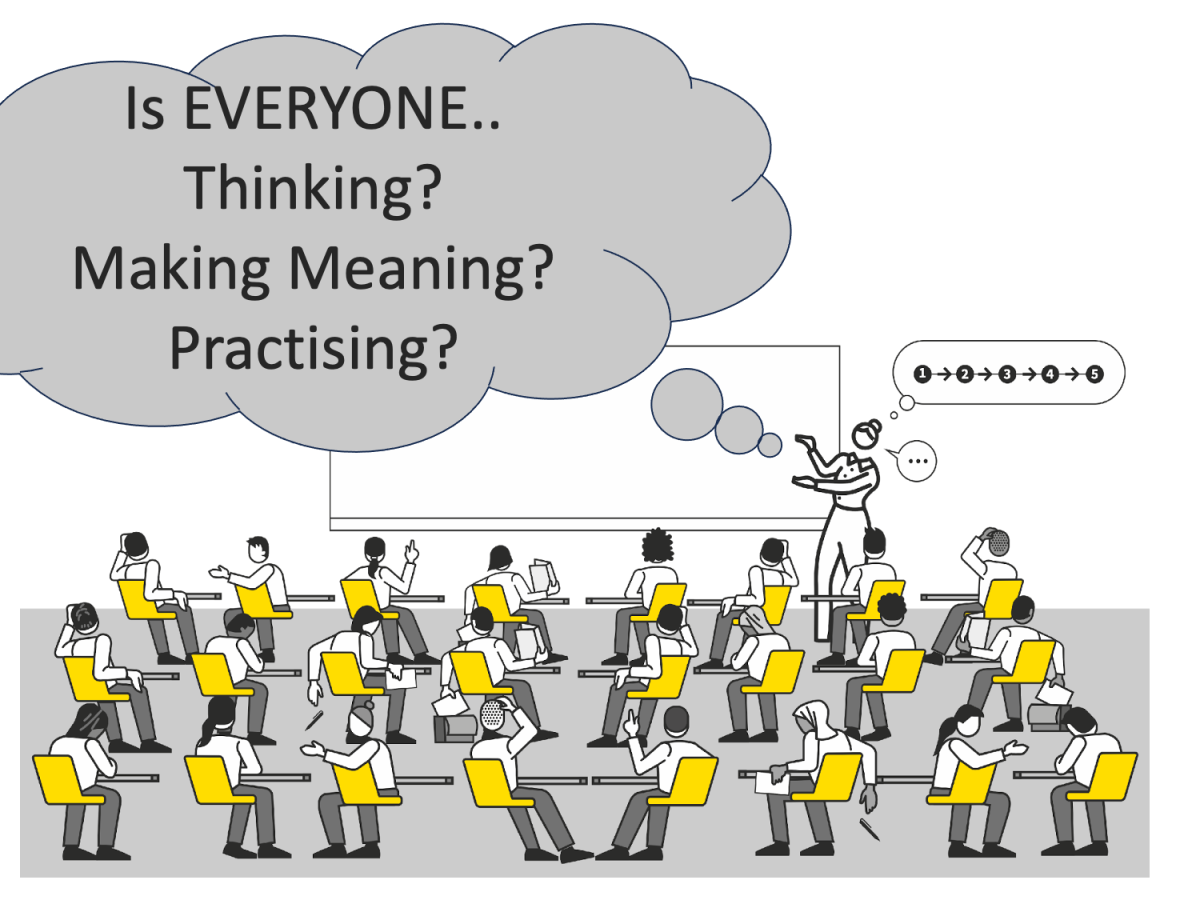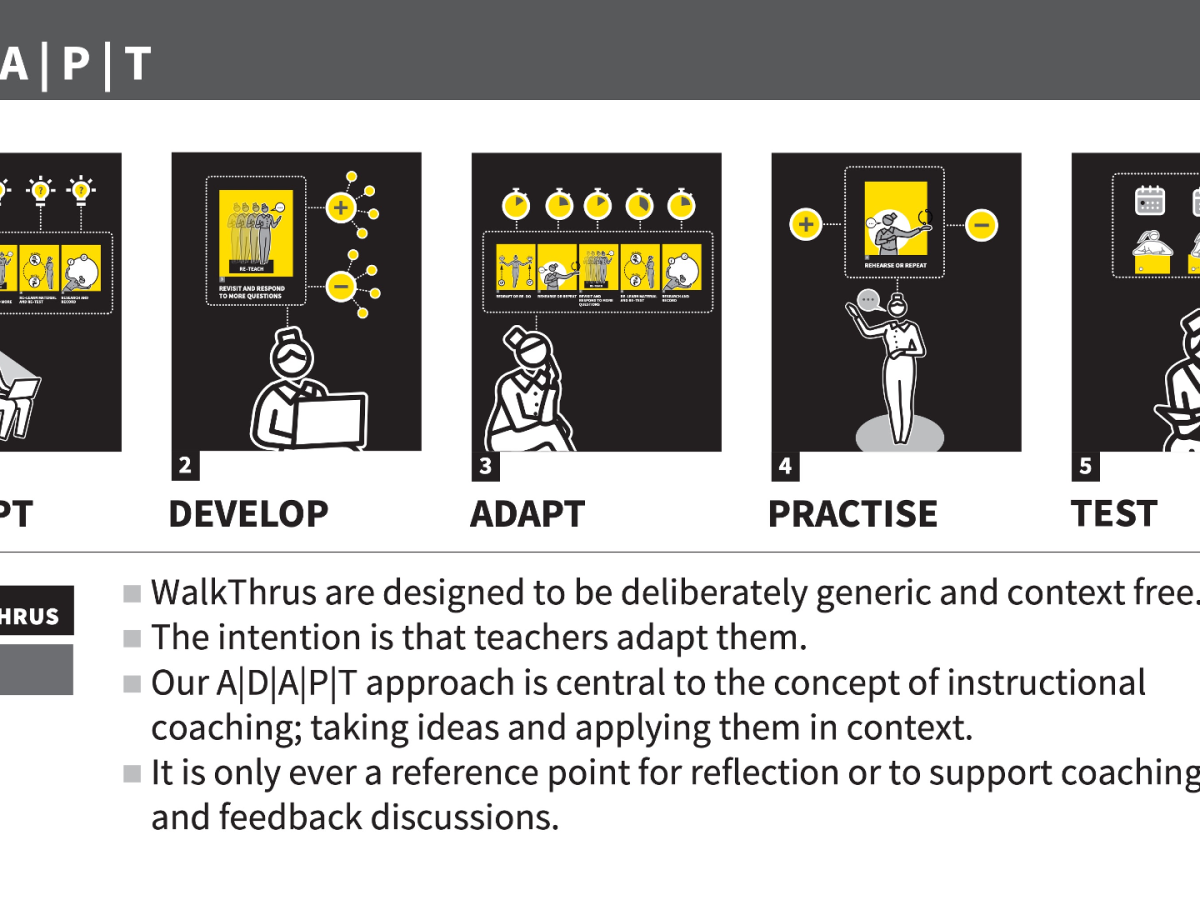A theme I find myself exploring a lot is the need for teachers to feel that they can be themselves in their own classrooms, expressing their personality and enjoying teaching, doing things they feel confident and comfortable doing. I explored this issue in a recent post written as a response to a wave of interest in the ‘all hands-up’ and ‘heads down’ strategies:
Technique, personality and values. (Or: why I wouldn’t ever do ‘all hands up’.)
There have been some superb blogs and discussions recently exploring classroom practice -the specifics of techniques and the issues that surround implementing ideas. I work with these issues every day and find it endlessly…
Here I discuss my aversion to techniques that I personally would feel foolish using; they feel like party tricks to me and don’t chime with my sense of what building student agency and ‘treating students like grown-ups’ ought to be. And yet, in the hands of others, I fully accept that other teachers might do these things happily and effectively, And that’s ok. My feelings about it don’t need to matter to anyone else. Nobody has to win!
I encounter this in every school I visit: teacher personality is a massive factor in every lesson and plays a huge role in teacher development. Teachers always express ideas in a variety of ways down the same corridor. It’s part of the joy of a school community, that people of all kinds can teach effectively and form different types of relationships with their classes. Every teacher is a unique person and, even while we have so much in common, we have to approach the teacher development process understanding that we all make sense of ideas in our own way. Jane, Safia and Rob can all improve as teachers but, above all they need to feel motivated and supported to feel confident in themselves; a more effective version of themselves:
Be A Better B!
Last weekend, after an excellent ResearchEd event in Philadelphia, where Dylan Wiliam had given a superb keynote, I wrote this tweet: https://twitter.com/teacherhead/status/1056522479643082753 It’s now had over 2000 ‘likes’ – which is far more than anything…
They need to develop their craft in ways they will sustain lesson after lesson when nobody else is there to watch; just them and their class. That won’t happen if the CPD agenda feels like it belongs to others but not them. Teachers are good at quiet dogged resistance…. change just doesn’t happen unless each teacher is choosing to change. If we don’t respect that, we get surface, performative, compliance-check change, not anything deeper.
At the same time, however, I’m convinced that the response to this is really not helped by an ‘each to their own’, ‘anything goes’ approach. It just isn’t true that anything can work. This only holds if you’re not too interested in ensuring that every individual student is learning in a class. If you want all students learning, then some methods are much more likely to achieve that than others.
So, how do we balance this? How can we foster the use of sound techniques whilst also holding onto autonomy and valuing teacher personality.? This is where I find the tennis/jazz analogies helpful: we learn well-defined, sound techniques so that we can use them expressively:
The way we introduce ideas so that the jazz can flow is critical. We don’t start with non-negotiables (such an appalling term). We start with principles that inform what we do, then we build up a repertoire of techniques that are commonly understood but allow ample scope for fluid responsive teaching. We then expect teachers to adapt techniques so that they work in their specific classes – and with their personality!
1. Underpin CPD with fundamental principles and a model for learning.
Our understanding of learning is always developing and we’re nowhere near a position where specific techniques are proven to be the best in any given scenario. We have some good bets based on our understanding but there is huge scope for flex- whilst still adhering the fundamentals. Start here.
2. Amplify options; develop a repertoire of techniques.
We shouldn’t focus on specific routines to the extend that others are excluded – we should explicitly aim for teachers to have a repertoire at their disposal; like the strokes in tennis and the rhythms and standards in jazz. Real joy in teaching comes from the spontaneity and creativity in responding in the moment. But we don’t have to be making it up as we go.
3. Apply the ADAPT approach; but keep the precision.
There’s a big difference between distorting an idea so the key power of it has been lost – and adapting it so that is fits in a specific subject-class context. Precision is key here – it’s not about cutting corners and fudging; it’s about intentionality – deliberate adaptation with specific content and procedures.
The A|D|A|P|T approach to implementing teaching ideas.
When Oliver Caviglioli and I sat down to think about our Teaching WalkThrus project, an early consideration was the problem of “implementation” and the practices that surround it.…
Routines are helpful – just don’t turn them into straitjackets.
As, ever this might all seem obvious to many readers. However, it’s worth thinking about, especially given the recruitment and retention situation. Teaching has to be joyful – and it can be if we let it.










